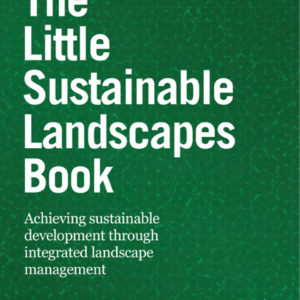
Extract from book introduction:
The growth in global population and more demanding consumption patterns around the world are placing ever increasing pressures on land and its resources. This is resulting in conflicts and the unsustainable use of humanity’s resource base.
Households, farms, industry, energy, tourism, and wildlife compete for resources. For example, production agriculture is now such a dominant land use that water recharge in watersheds and the viability of wildlife populations depends critically on how croplands are managed. Agricultural expansion often pushes back the area covered by standing forests, while degraded land that could be restored to production remains unutilised. Playing across this tapestry are the dynamics of human migration, including urbanisation.
International policy dialogues such as the recently announced Sustainable Development Goals (SDGs) and negotiations on a new global climate agreement have highlighted the need for sustainable landscapes as a source of multiple social, economic and environmental benefits.
This book aims to demystify and share best practices of integrated landscape management as a holistic approach to reconcile the sometimes-competing objectives of economic development and environmental sustainability. The book highlights how integrated landscape management can be a useful tool to support local needs and priorities, while also contributing to ambitious global goals, such as the SDGs.
The book outlines the key elements that form the basis of integrated landscape management, and the tools that can be used for its implementation. It examines the broader governance, market and finance catalysts that can help to achieve sustainable landscapes. It concludes with a set of key recommendations for action to advance the effective use of integrated landscape management around the world.
The Global Canopy Programme has partnered with a range of expert organisations including EcoAgriculture Partners, The Nature Conservancy, World Wide Fund for Nature and The Sustainable Trade Initiative (IDH) to deliver the seventh Little Book in the series. The authors hope this material will help policymakers charged with delivering on the SDGs, and those engaged in the Rio Conventions negotiations, as well as actors in the private sector, and other practitioners and scholars in this field to better understand and navigate the issues at stake.
Citation
Denier, L., Scherr, S., Shames, S., Chatterton, P., Hovani, L. and Stam, N. (2015). The Little Sustainable Landscapes Book, Global Canopy Programme: Oxford.
Download the book for free here and see further coverage here.
You can find related resources in the research Library categories on Land and Governance and Policy and keyword categories: Landscapes, Land Governance and Land Use and Land Use Change







Post a new comment »